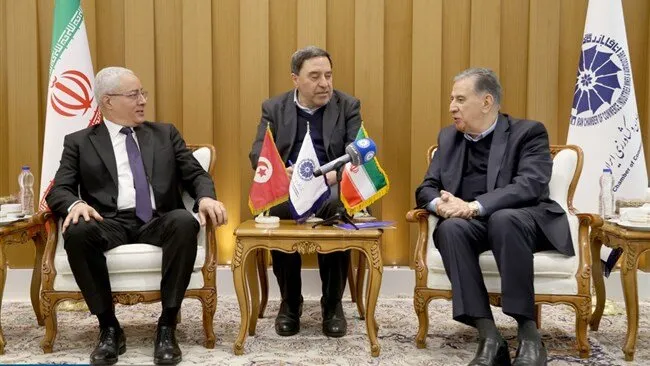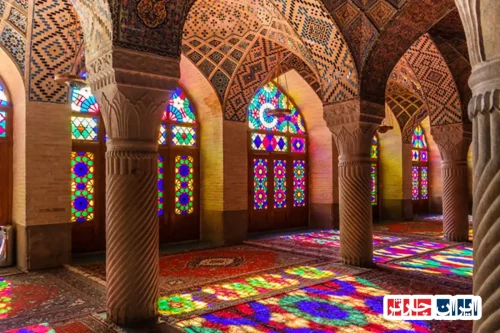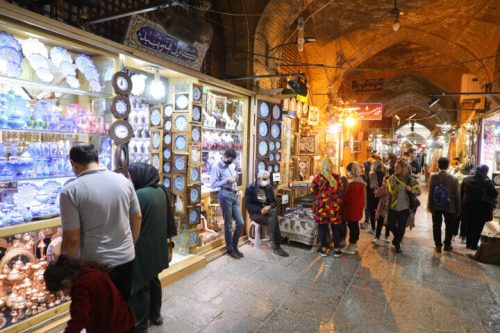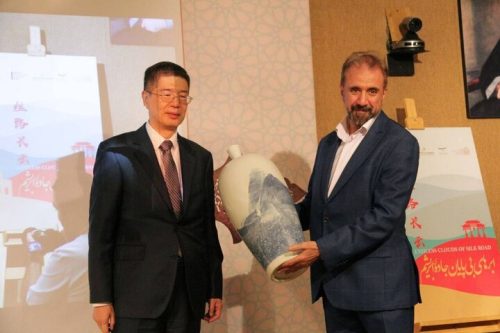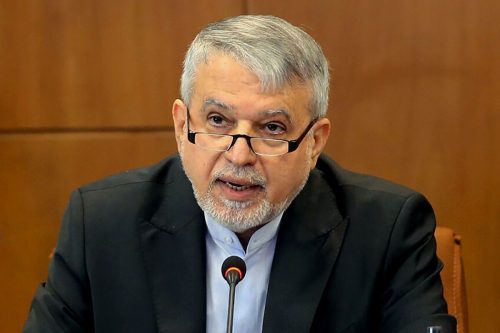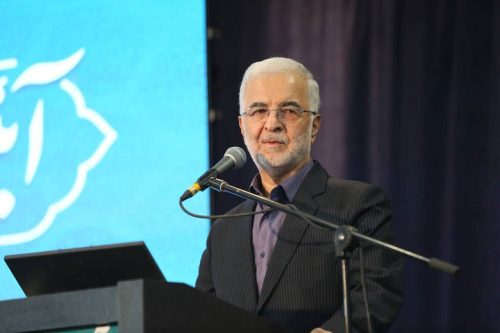Strategic Tourism Pact Between Iran and Tunisia Redefines Cultural Diplomacy: A Bold Vision for Global Cultural Exchange
In today’s rapidly globalizing world, international partnerships are evolving to embrace not only economic gains but also cultural unity and mutual understanding. The Strategic Tourism Pact Between Iran and Tunisia Redefines Cultural Diplomacy by forging a groundbreaking alliance that leverages history, art, and heritage to create transformative experiences for travelers and locals alike. This innovative pact stands as an emblem of shared aspirations, uniting two nations with ancient legacies and dynamic modern visions, and it sets the stage for a new era where tourism becomes a bridge for cultural exchange and sustainable development. At its core, this strategic pact marks a convergence of interests that transcends conventional tourism. It is a comprehensive framework aimed at harnessing tourism as a dynamic instrument for cultural diplomacy, economic innovation, and social progress. By nurturing bilateral exchanges, the agreement paves the way for collaborative projects that celebrate artistic traditions, archaeological wonders, and natural landscapes, while simultaneously fostering investment in infrastructure and the hospitality sector. Over the past few decades, both Iran and Tunisia have cultivated rich cultural tapestries, and this pact is designed to capitalize on those narratives, highlighting their storied pasts and envisioning paths to a resilient future. Historically, each nation has possessed unique contributions to the global conversation on art, literature, and historic preservation. The pact recognizes that tourism is not merely about visiting landmarks—it is about experiencing authentic cultural expressions through culinary tours, traditional music festivals, and heritage trail walks that recount centuries-old legacies. In this context, the Strategic Tourism Pact Between Iran and Tunisia Redefines Cultural Diplomacy by emphasizing quality over quantity, ensuring that visitors gain an immersive experience that honors local pride and international curiosity. Such initiatives encourage the integration of modern tourism policies with age-old traditions, thereby promoting a synthesis that captivates hearts and broadens perspectives. The economic ramifications of this agreement are as significant as its cultural ambitions. By creating new opportunities for cross-border collaboration, the pact serves as a catalyst for regional development and job creation. Investment in tourism-related industries—ranging from hospitality and transport to digital media and event management—is expected to surge as businesses work together to create innovative travel itineraries and cultural festivals that speak to diverse audiences. This economic boost will help generate sustainable revenue streams that fund the preservation of historical sites and the promotion of local arts, further ensuring that economic progress and cultural heritage go hand in hand. In doing so, it exemplifies how integrated strategies can support community development while preserving the spirit of the past. Moreover, the pact’s emphasis on cultural diplomacy provides a strategic counterbalance to the challenges of modern geopolitical dynamics. In an era where political rhetoric often overshadows shared human values, this agreement underscores the importance of dialogue, exchange, and cooperation as vital components of peaceful international relations. Through carefully curated tourism experiences, both nations can display the richness of their cultural identities, foster mutual respect, and create lasting partnerships that extend well beyond the realm of travel. When visitors traverse ancient ruins, vibrant bazaars, and contemporary art venues, they participate in a living narrative that reinforces the diplomatic role of culture in mending divisions and paving the way for a more harmonious global community. In addition to economic revitalization and cultural exchange, environmental sustainability plays a pivotal role in the strategic framework. Recognizing the intrinsic link between tourism and conservation, the pact advocates for eco-friendly practices and the responsible management of natural resources. Initiatives include the development of green tourism corridors, the conservation of biodiversity hotspots, and support for community-led projects that preserve local ecosystems. By integrating sustainability into the core of its tourism strategy, the agreement not only enhances the visitor experience but also ensures that future generations inherit a world rich in natural beauty and cultural depth. Strategies such as renewable energy usage in heritage sites, conservation workshops, and sustainable transport solutions are set to become standard practices under this pioneering pact. Another key feature of this initiative is its commitment to innovation and technology in the tourism sector. In an increasingly digital age, the ability to reach global audiences through virtual tours, interactive exhibits, and digital storytelling is paramount. The pact envisages a collaborative approach to technological advancement, where both countries invest in research and development projects that enhance travelers’ experiences and improve the management of cultural assets. Digital platforms will facilitate real-time information sharing, online ticketing systems, and immersive augmented reality experiences, ensuring that the story of each nation’s heritage is accessible to all, regardless of geographic constraints. Through these state-of-the-art solutions, the Strategic Tourism Pact Between Iran and Tunisia Redefines Cultural Diplomacy by blending tradition with innovation in a seamless narrative. The educational aspect of tourism is also central to the pact’s vision. Cultural exchange programs, academic conferences, and joint research projects are being planned to allow experts, historians, and educators to share their insights and collaborate on projects that bring historical narratives to life. This intellectual engagement will not only enrich the travel experience but also contribute to a broader understanding of the cultural, social, and economic forces that shape modern societies. By positioning education at the forefront of its agenda, the initiative creates opportunities for capacity-building and skills development in local communities, ensuring that the benefits of enhanced tourism are distributed widely and equitably. Furthermore, the agreement underscores the importance of preserving intangible cultural heritage. Oral histories, traditional crafts, music, and dance are critical components of a nation’s identity and are celebrated within this cooperative framework. Cultural festivals and heritage fairs will serve as platforms for artists, performers, and craftsmen to showcase their work and pass on their skills to younger generations. This transmission of knowledge is pivotal in maintaining a living connection to the past while fostering creativity and innovation in the present. In doing so, the pact strengthens the social fabric of both nations by promoting pride, unity, and respect among their citizens. The impact of this strategic pact is expected to ripple across multiple facets of society. Enhanced tourism brings with it increased exposure to diverse cultures, which in turn encourages tolerance and broader worldviews. Business partnerships nurtured under this agreement will likely lead to joint ventures, bilateral investments, and innovative start-ups in areas related to cultural preservation and tourism management. As these relationships deepen, they will create a robust network of cultural ambassadors who champion the respective histories and values of their homelands. The successful implementation of such a visionary plan could serve as a model for other nations, demonstrating that tourism can be a powerful tool for diplomatic engagement and sustainable development. In practical terms, the initiatives under this pact will include the establishment of cultural exchange centers, specialized training programs for tourism professionals, and dedicated funds for the restoration of historic monuments. These projects are designed to create an ecosystem where tourism is not just consumption but a mutually enriching experience that transcends economic benefits to embrace social and cultural dimensions. As both countries embark on this transformative journey, they reaffirm their commitment to a future where travel is synonymous with learning, respect, and global unity. Reflecting on the historical trajectories of Iran and Tunisia, it is evident that both nations possess a wealth of stories that resonate with the universal quest for identity and belonging. The agreement leverages these narratives by offering curated experiences that highlight significant historical epochs, celebrate artistic masterpieces, and illuminate the customs and traditions that have shaped these societies over millennia. Travelers will encounter guided tours that take them through ancient ruins, vibrant marketplaces, and modern cultural hubs where contemporary art and classical music coexist in harmony. Each carefully designed itinerary aims to educate, inspire, and nurture a genuine appreciation for the shared human condition. Furthermore, the pact is founded on the belief that cultural diplomacy can act as an antidote to discord and misunderstanding in an era marked by rapid change and uncertainty. The Strategic Tourism Pact Between Iran and Tunisia Redefines Cultural Diplomacy by fostering direct and meaningful interaction between people of diverse backgrounds. As visitors engage in dialogue with local residents, sample traditional cuisine, and participate in time-honored rituals, they gain firsthand insights into the lived realities of communities that might otherwise remain stereotyped or misunderstood. This exchange of ideas and experiences has the potential to bridge divides, build trust, and create networks of solidarity that extend far beyond the confines of conventional tourism. Looking forward, the long-term success of this initiative will depend on the continued commitment of both governments and private stakeholders to uphold its core values of sustainability, innovation, and mutual respect. Regular assessments and adaptive strategies will be necessary to ensure that the goals of the pact remain aligned with evolving geopolitical, economic, and social dynamics. As challenges arise—ranging from shifts in global travel trends to environmental concerns—the partnership will need to remain flexible, responsive, and forward-thinking. By fostering an environment where cultural diplomacy is interwoven with economic strategy and environmental stewardship, the pact lays the groundwork for enduring benefits that will resonate for generations. In conclusion, the Strategic Tourism Pact Between Iran and Tunisia Redefines Cultural Diplomacy by offering a visionary model for how tourism can catalyze economic growth, cultural preservation, and international cooperation. It stands as a testament to the power of collaborative spirit and serves both as an inspiration and a roadmap for other nations seeking to harness the transformative potential of tourism. Through this alliance, travelers are invited to embark on journeys that are as enriching intellectually as they are delightful sensorially, discovering not only the treasures of the past but also the innovative possibilities of the future. By integrating sustainable practices, state-of-the-art technology, and a deep respect for cultural heritage, the pact illuminates a path toward a more inclusive, dynamic, and resilient global community. Ultimately, this strategic partnership reaffirms that when nations come together with a common purpose, the result is a powerful synergy capable of reshaping not just markets and infrastructures but hearts and minds across the world.
tourismdevelopment-Iran Charter
tourismdevelopment-Iran Charter
tourismdevelopment-Iran Charter
Enhancing Cultural and Economic Exchange through the Strategic Tourism Pact Between Iran and Tunisia Redefines Cultural Diplomacy
The Strategic Tourism Pact Between Iran and Tunisia Redefines Cultural Diplomacy by serving as a powerful conduit for cultural, social, and economic exchanges that transcend traditional tourism. This initiative capitalizes on the unique historical, artistic, and natural assets of both nations to foster a vibrant platform where cultural dialogue and economic growth converge. The pact encourages the sharing of rich traditions and heritage while also inviting modern business strategies that stimulate local economies. By aligning cultural events, historical tours, and business development projects, the agreement creates a multidimensional framework that not only boosts bilateral trade but also enhances mutual understanding and respect between peoples, ultimately paving the way for sustainable regional development.
Establishing a Bridge Between Cultures with the Strategic Tourism Pact Between Iran and Tunisia Redefines Cultural Diplomacy
This ground-breaking pact stands as a symbolic bridge that links the distinct cultural identities of Iran and Tunisia, heralding a new era of international tourism based on deep cultural engagement. By crafting well-curated travel experiences—from immersive historical tours to modern art exhibitions—the initiative creates a shared narrative that celebrates diversity while uniting people under common aspirations. The alliance leverages traditional art forms, culinary delights, and heritage sites to create memorable experiences that resonate with global travelers. It transforms conventional perceptions of tourism into dynamic cultural exchanges that not only entertain but also educate, building lasting connections between communities and reinforcing the idea that cultural diversity is a strength to be celebrated.
Transforming Tourism Infrastructure through the Strategic Tourism Pact Between Iran and Tunisia Redefines Cultural Diplomacy
At the core of this innovative pact is a commitment to upgrading tourism infrastructure and accommodation services, reflecting an integrated approach to cultural and economic development. The agreement promotes investment in modern facilities that honor ancient legacies while incorporating cutting-edge technology to enhance visitor experiences. With extensive plans to revitalize hotels, cultural centers, and eco-friendly resorts, both nations are well-positioned to offer a seamless blend of comfort and cultural authenticity. This thoughtful integration of infrastructure development and cultural preservation ensures that the growth in tourism translates effectively into broad economic benefits, enhancing accessibility and service quality while respecting the historical and natural environment.
Driving Economic Growth with the Strategic Tourism Pact Between Iran and Tunisia Redefines Cultural Diplomacy
The economic implications of the Strategic Tourism Pact Between Iran and Tunisia Redefines Cultural Diplomacy are profound, as the agreement acts as a catalyst for stimulating new investments and boosting regional business activities. By creating an environment conducive to cross-border collaborations, the pact opens up opportunities across various sectors including hospitality, transportation, digital media, and event management. This integrated strategy not only broadens the revenue base but also encourages the development of local entrepreneurs and artisans. Such economic dynamism results in diversified income streams that contribute to sustainable growth and job creation, ensuring that tourism remains a central pillar in the broader framework of national development and international economic cooperation.
Fostering Artistic and Cultural Exchange through the Strategic Tourism Pact Between Iran and Tunisia Redefines Cultural Diplomacy
Cultural enrichment lies at the heart of this strategic pact, which leverages the unique artistic and historical narratives of Iran and Tunisia to produce innovative cultural exchange programs. The initiative supports a variety of artistic endeavors including joint exhibitions, music and dance festivals, and traditional craft showcases that bring together diverse cultural expressions. This engagement not only enhances the visitor experience but also creates opportunities for local artists to gain international exposure, preserve intangible cultural heritage, and inspire future generations. By providing a platform for creative collaboration, the pact bridges cultural gaps and fosters meaningful interactions that have the power to transcend political and geographical boundaries.
Innovating Through Technology: The Role of the Strategic Tourism Pact Between Iran and Tunisia Redefines Cultural Diplomacy in a Digital Age
This vision for cultural diplomacy embraces digital transformation, as the Strategic Tourism Pact Between Iran and Tunisia Redefines Cultural Diplomacy integrates advanced technological solutions into every aspect of its framework. The pact promotes the development of interactive digital tours, virtual reality experiences, and real-time booking systems that make cultural heritage accessible to a global audience. Advanced data analytics and smart infrastructure further enhance the travel and cultural experience, ensuring that historical sites and museums are both well-preserved and widely appreciated. By merging tradition with technology, the strategic partnership not only modernizes the tourism sector but also guarantees that the timeless legacy of each nation is communicated in innovative and engaging ways.
Attracting Strategic Investments through the Strategic Tourism Pact Between Iran and Tunisia Redefines Cultural Diplomacy
One of the standout features of this forward-thinking pact is its strategic approach to attracting both domestic and international investments. By establishing clear frameworks and encouraging transparent, collaborative ventures, the agreement creates an attractive landscape for investors looking to finance tourism infrastructure, cultural restoration projects, and innovative startups. The targeted investments are aimed at enhancing service quality and boosting local economies while ensuring that the preservation of historic sites and cultural heritage remains a top priority. This balanced approach promotes long-term financial stability and positions the partner nations as emerging hubs for international tourism, where economic prosperity and cultural reverence go hand in hand.
Overcoming Challenges for Effective Implementation of the Strategic Tourism Pact Between Iran and Tunisia Redefines Cultural Diplomacy
Implementing a cross-border initiative of this magnitude naturally presents challenges, ranging from bureaucratic hurdles to logistical coordination between diverse administrative systems. However, the Strategic Tourism Pact Between Iran and Tunisia Redefines Cultural Diplomacy proactively addresses these challenges by outlining clear operational frameworks, fostering strong governmental cooperation, and involving key stakeholders from both public and private sectors. Continuous dialogue, policy harmonization, and adaptive management strategies are essential to overcome potential obstacles. By drawing on successful models from around the world and tailoring them to fit the unique socio-cultural contexts of Iran and Tunisia, the pact sets a precedent for resolving issues effectively, ensuring smooth execution and lasting impact.
Shaping the Future: A Vision Beyond Borders with the Strategic Tourism Pact Between Iran and Tunisia Redefines Cultural Diplomacy
Looking ahead, the Strategic Tourism Pact Between Iran and Tunisia Redefines Cultural Diplomacy lays a visionary foundation for the future of international cultural and economic relations. With an emphasis on sustainability, technological innovation, and continuous cultural exchange, the pact is designed to adapt to the evolving global tourism landscape. Long-term strategies include the development of smart tourism corridors, eco-friendly initiatives, and cultural education programs that empower local communities while fostering greater international understanding. As both nations continue to collaborate and innovate, this pact is set to become a benchmark for how strategic partnerships can revolutionize tourism, celebrate cultural heritage, and drive profound socio-economic transformation on a global scale.
Frequently Asked Questions
- What is Iran Charter?
- Iran Charter is a company that provides tourism services with a focus on quality and diversity.
- What are the cultural tourism features of Iran?
- Iran boasts a rich history, unique cultural heritage, and distinctive architecture that captivate travelers.
- How have Iran’s tourism capacities developed?
- With a wide range of accommodation options and the promotion of historical and natural attractions, Iran offers great potential to attract international visitors.
- What measures have been taken to develop tourism?
- Enhancing infrastructure, improving services, and fostering international collaborations are some of the essential steps taken to advance tourism.
- How are historical and natural tourism sectors strengthened in Iran?
- By featuring historical sites along with natural attractions in tour programs and maintaining cultural identity, both sectors are developed in harmony.
- What is the state of accommodation facilities in Iran?
- Iran offers a variety of lodging options including hotels, eco-lodges, and other accommodations to cater to different types of travelers.
- What role does the private sector play in developing tourism?
- The private sector significantly contributes by investing in tourism projects and delivering innovative services which boost the industry.
- What is the importance of tourism agreements?
- International tourism agreements help facilitate experience exchange, enhance facilities, and improve the attraction of tourists.
- How can the attraction of foreign tourists be improved?
- Offering high-quality services, expanding accommodation facilities, and employing targeted advertising are key factors in attracting international travelers.
- How is the promotion of handicrafts alongside tourism achieved?
- By providing local products as souvenirs and organizing joint exhibitions, handicrafts are integrated into the overall travel experience.
- What strategies help strengthen international cooperation in tourism?
- Joint events, developing direct flight routes, and sharing expertise are effective strategies for enhancing international tourism collaborations.
- How does a shared language and culture affect tourist attraction?
- Common cultural and linguistic ties foster closer communication and trust, which play a significant role in drawing tourists.
- How does Iran Charter serve travelers?
- Iran Charter offers comprehensive tour packages, 24/7 support, and expert consultation to ensure traveler satisfaction.
- What role do media play in promoting tourism?
- Media outlets contribute by publishing relevant news, highlighting tourist attractions, and providing accurate information to boost the country’s image.
- What measures have been taken to establish direct flight routes?
- Developing direct routes between countries streamlines travel and enhances passenger security, making it a top priority.
- How is health tourism being developed in Iran?
- By leveraging modern healthcare facilities, well-equipped accommodations, and tailored programs, health tourism is emerging as a dynamic sector.

